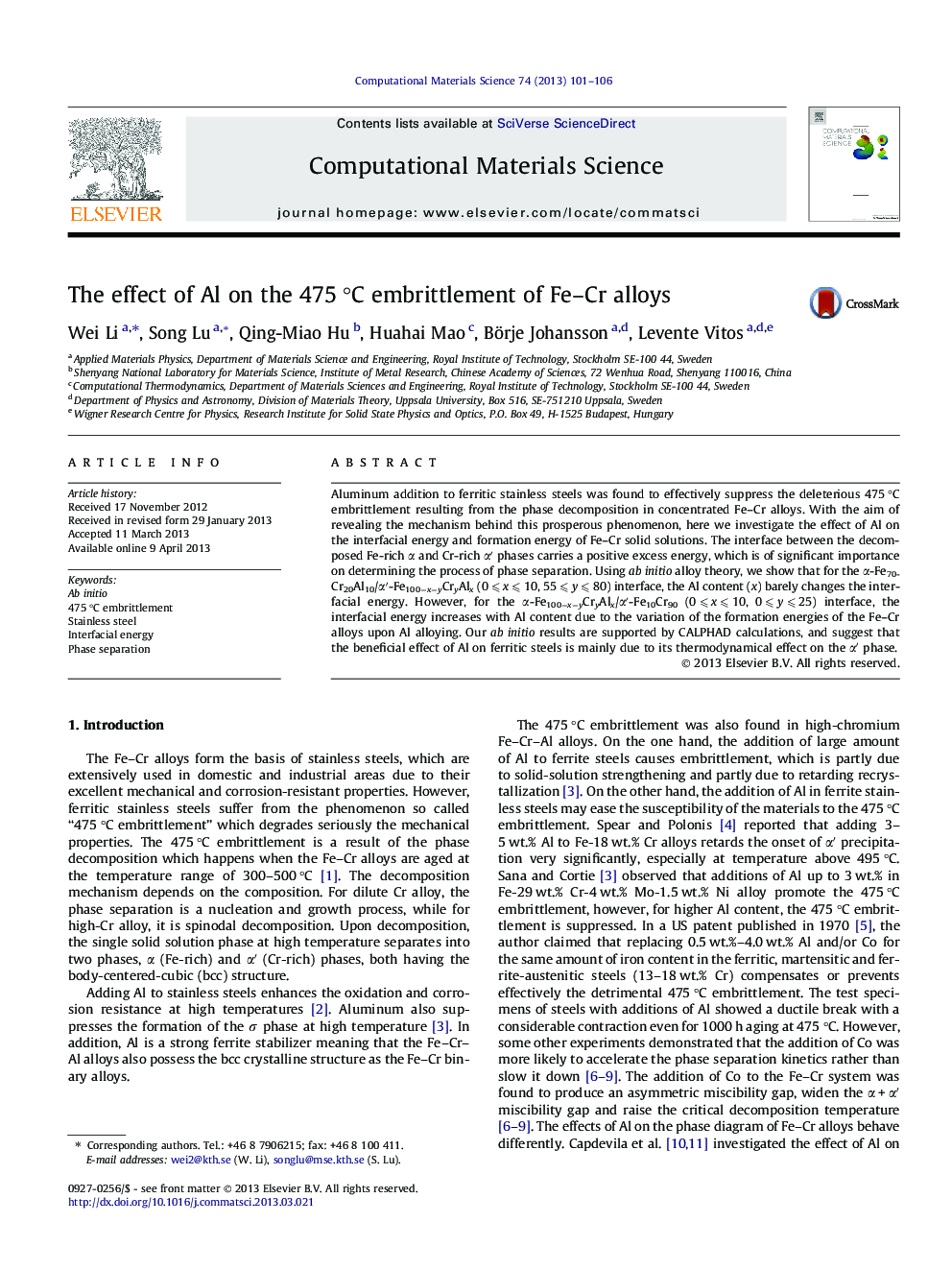| Article ID | Journal | Published Year | Pages | File Type |
|---|---|---|---|---|
| 1561141 | Computational Materials Science | 2013 | 6 Pages |
•We study the effect of Al on the interfacial and formation energy of Fe–Cr alloys.•Al rarely change the interfacial energy between the α and α′ phases.•Al suppresses the phase separation of Fe–Cr alloys by destabilizing the α′ phase.•The α + α′ phase boundary is shifted to high Cr content by Al.
Aluminum addition to ferritic stainless steels was found to effectively suppress the deleterious 475 °C embrittlement resulting from the phase decomposition in concentrated Fe–Cr alloys. With the aim of revealing the mechanism behind this prosperous phenomenon, here we investigate the effect of Al on the interfacial energy and formation energy of Fe–Cr solid solutions. The interface between the decomposed Fe-rich α and Cr-rich α′ phases carries a positive excess energy, which is of significant importance on determining the process of phase separation. Using ab initio alloy theory, we show that for the α-Fe70Cr20Al10/α′-Fe100−x−yCryAlx (0 ⩽ x ⩽ 10, 55 ⩽ y ⩽ 80) interface, the Al content (x) barely changes the interfacial energy. However, for the α-Fe100−x−yCryAlx/α′-Fe10Cr90 (0 ⩽ x ⩽ 10, 0 ⩽ y ⩽ 25) interface, the interfacial energy increases with Al content due to the variation of the formation energies of the Fe–Cr alloys upon Al alloying. Our ab initio results are supported by CALPHAD calculations, and suggest that the beneficial effect of Al on ferritic steels is mainly due to its thermodynamical effect on the α′ phase.
